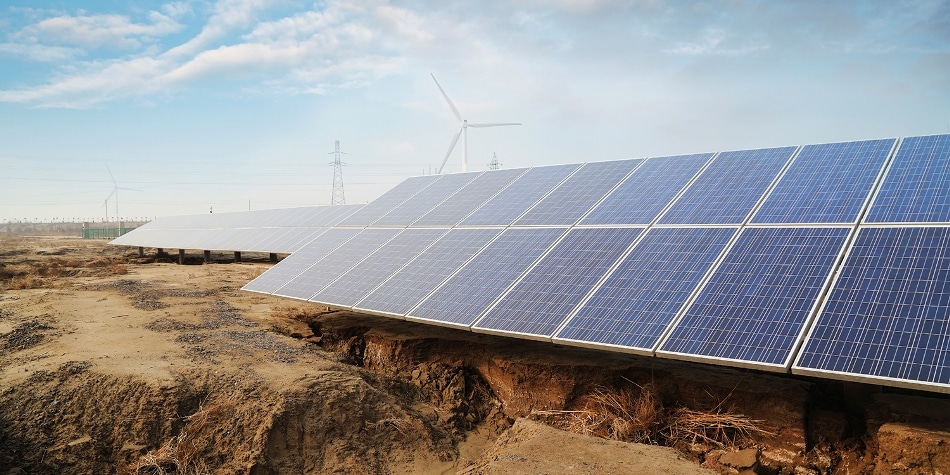Apr 12 2017
 Credit: USC Viterbi School of Engineering
Credit: USC Viterbi School of Engineering
Despite the fact that innumerable optoelectronic devices are fabricated using semiconductors, with the size of the devices getting reduced, and high expectations on them, new materials are in demand to increase the efficiency of the devices. For the first time, scientists from the USC Viterbi School of Engineering have developed an innovative type of semiconductor material that may improve the functionality of solar panels and optoelectronic devices, using material 100 times less than the routinely used silicon.
A research team from USC Viterbi headed by Jayakanth Ravichandran—an assistant professor in the Mork Family Department of Chemical Engineering and Material Sciences—and comprising Shanyuan Niu, Huaixun Huyan, Yang Liu, Matthew Yeung, Kevin Ye, Louis Blankemeier, Thomas Orvis, Debarghya Sarkar, Assistant Professor of Electrical Engineering Rehan Kapadia, and David J. Singh (professor of physics from University of Missouri) has created an innovative type of materials with lesser toxicity and superior performance. The process developed by the research team has been reported in the article “Bandgap Control via Structural and Chemical Tuning of Transition Metal Perovskite Chalcogenide,” published in the journal Advanced Materials.
The lead author of the study Ravichandran is a materials scientist with immense interest in having a thorough knowledge of not only the flow of heat and electrons in materials but also the interaction of electrons within the materials. Such an in-depth understanding of the way in which material composition has an impact on electron movement played a major role in the most recent discovery by Ravichandran and his collaborators.
Being the principal investigator of the research, Ravichandran stated that although computers and electronics are being enhanced consistently, “the performance of the most basic device—the transistors—are not getting better.” With respect to performance, there is a plateau, denoted as “end of Moore’s law.” Apart from electronics, high-performance semiconductors can also be applied for opto-electronics. The aim of the collaboration between the electrical engineers and material scientists was to create innovative materials possessing optimal electrical and optical properties for a wide range of applications, for example, light emitters and detectors, displays, and solar cells.
The scientists created a new type of semiconductors known as “transition metal perovskite chalcogenides.” At present, the highly functional semiconductors do not possess adequate carriers for a specific volume of material (a property called as “density of states”). However, they swiftly transport the electrons and have high mobility. The main difficulty experienced by the researchers is to increase the density of states in materials while ensuring higher mobility. The innovative material is expected to have these conflicting characteristics.
In order to demonstrate its prospective applications, the scientists investigated its potential to absorb as well as emit light.
There is a saying- that a very good LED is also a very good solar cell.
Jayakanth Ravichandran, regarding the discussion among the researchers in the optics and photonics fields
As the materials formulated by Ravichandran and his collaborators can effectively absorb and emit light, they can be probably used in solar cells.
Solar cells in solar panels made of silicon can absorb light and transform it into electricity. The silicon is obtained from sand through an extraction technique that is highly energy intensive. If solar cells are fabricated using an innovative, alternative semiconductor material similar to the one developed by the USC Viterbi research team (i.e. a material with more electrons in a given volume of the material, thereby decreasing the panel thickness), the solar cells can become highly efficient— maybe using 100 times less material to generate the same amount of energy. When utilized in the solar energy industry, the innovative material can considerably reduce the cost of solar energy.
Although bringing such materials to the market may take much more time, the subsequent move would be to regenerate the material in an ultra-thin film form to produce solar cells and investigate their capacity.
The key contribution of this work is our new synthesis method, which is a drastic improvement from earlier studies. Also, our demonstration of wide tunability in optical properties (especially band gap) is promising for developing new optoelectronic devices with tunable optical properties.
Jayakanth Ravichandran